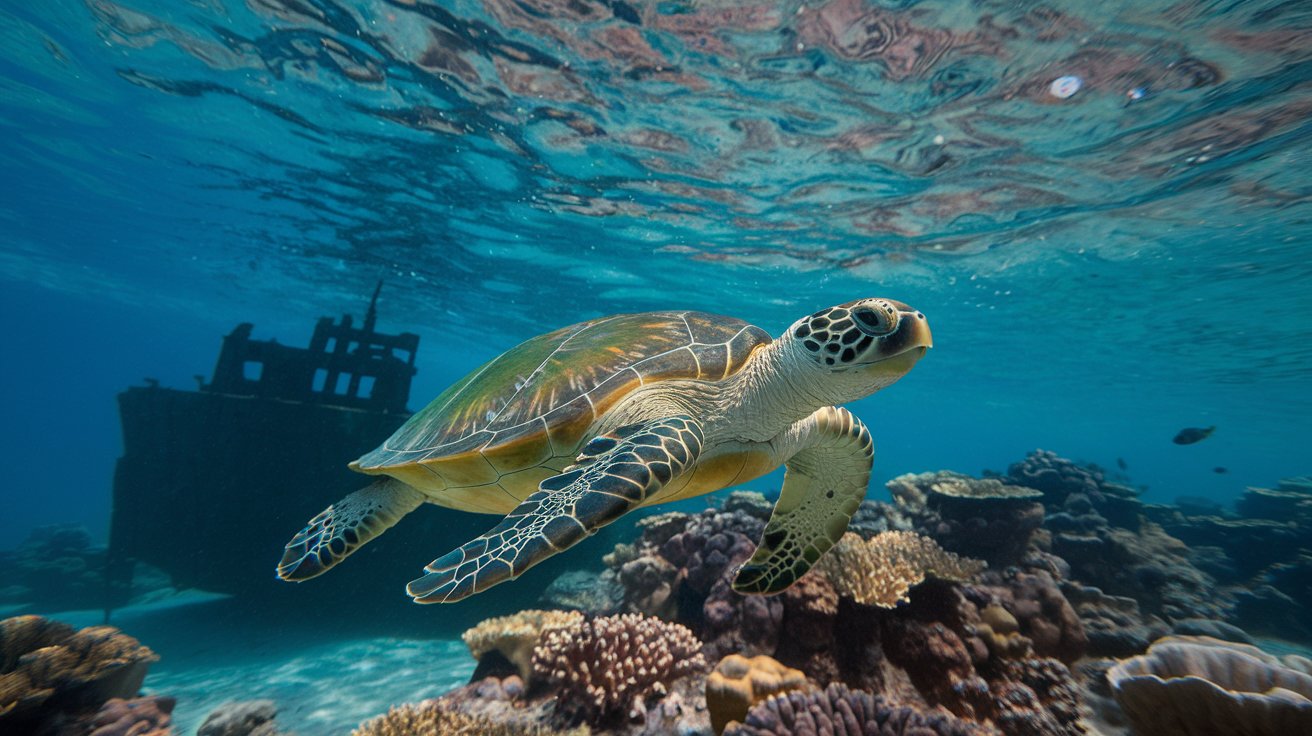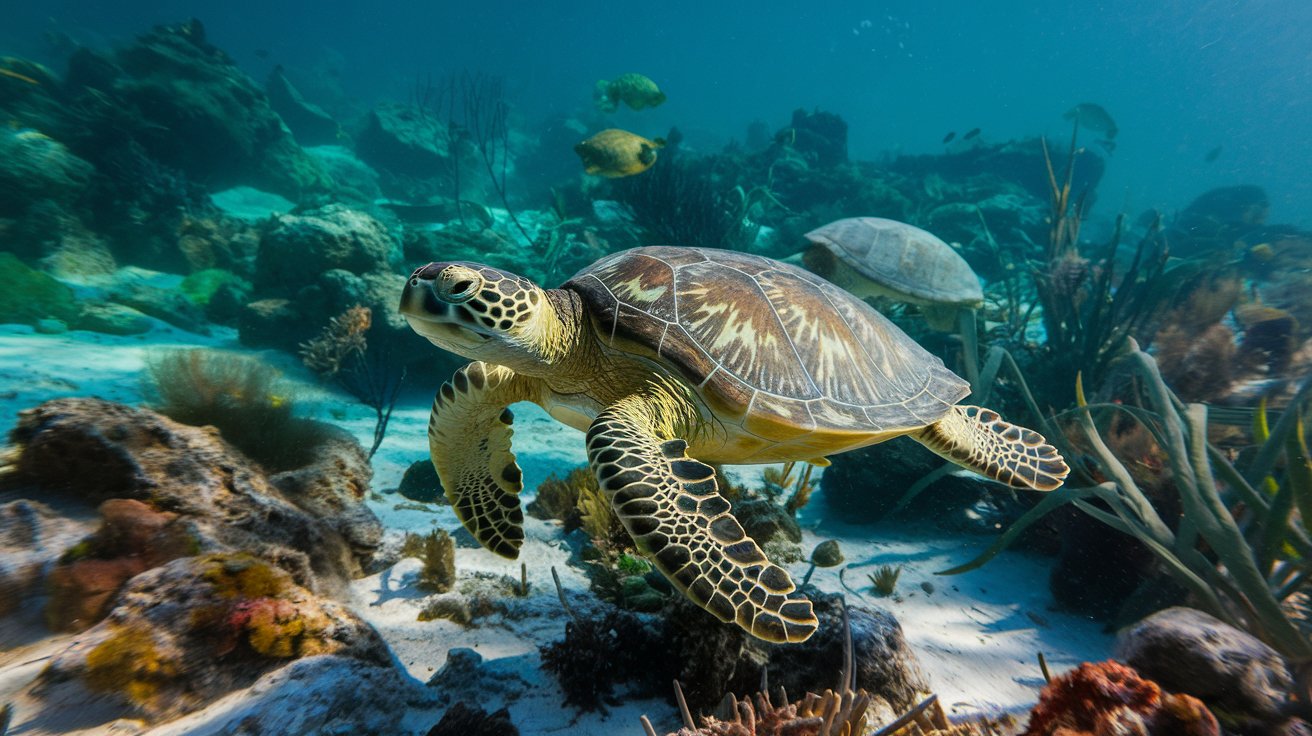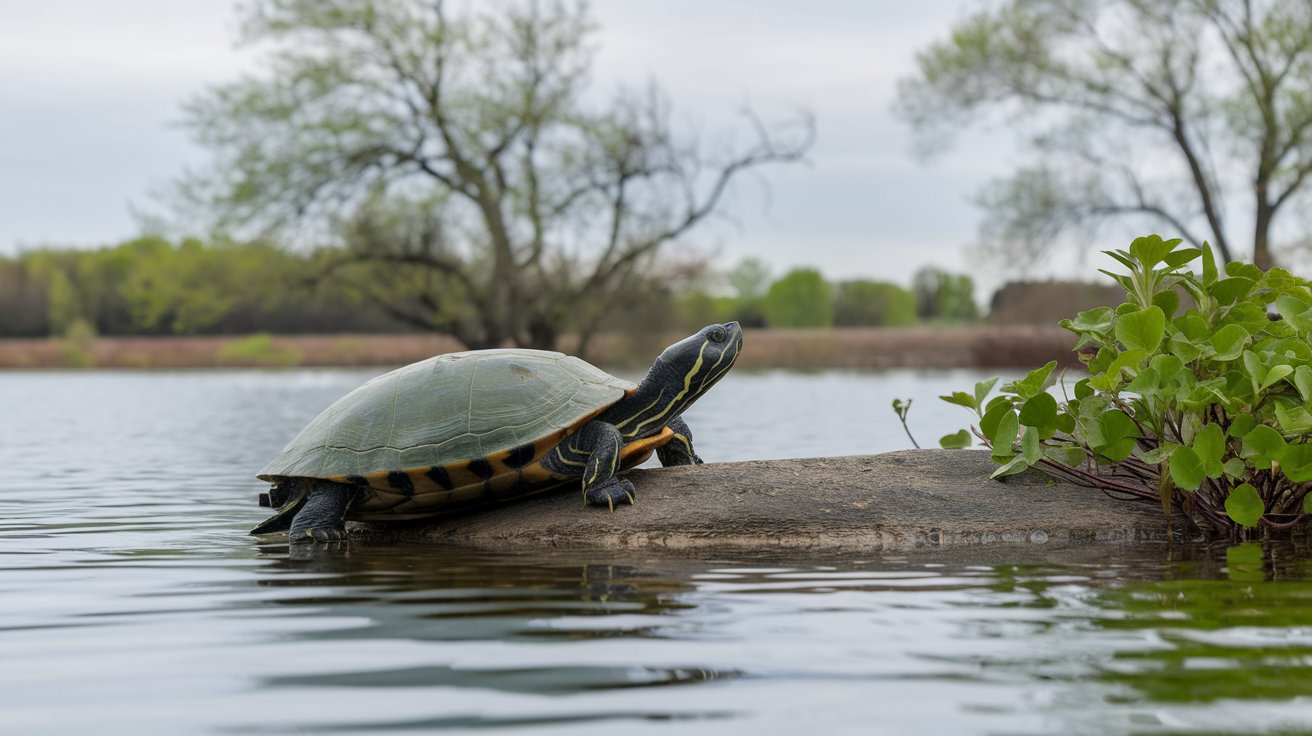
Green turtles, a vital species of marine turtle, are classified as endangered due to numerous threats, both natural and human-induced.
These turtles play a crucial role in maintaining healthy marine ecosystems, particularly by grazing on seagrass, which helps sustain biodiversity.
However, their populations are declining because of habitat loss caused by coastal development, pollution, and climate change, which disrupts nesting and feeding areas.
These turtles are named not for the color of their shells, which are typically brown or olive, but for the greenish hue of their body fat, attributed to their diet.
Green turtles are found in tropical and subtropical waters around the world, primarily nesting on sandy beaches and foraging in shallow coastal areas, lagoons, and coral reefs.

Reasons Why Green Turtles Are Endangered
1-Habitat Loss:
Coastal development destroys nesting beaches.
Pollution, including plastic waste, degrades their feeding grounds like seagrass beds and coral reefs.
2-Poaching and Exploitation:
Illegal hunting for their shells, meat, and eggs is a major threat.
Demand for turtle products in certain regions fuels overexploitation.
3-Bycatch in Fishing Gear:
Green turtles are often accidentally caught in fishing nets, leading to injuries or death.
Lack of effective measures like turtle excluder devices worsens this problem.
